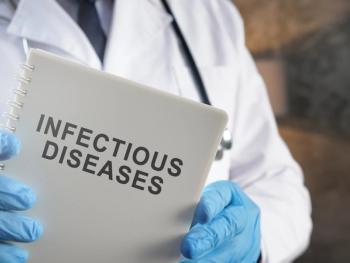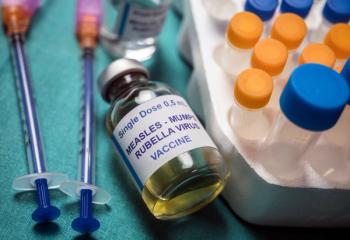
Shingles On the Face: Complications and Treatment
Potential for serious complications is very real.
The red rash and lesions associated with
Although the front and back of the torso are the usual sites of the rash, the face will be affected when the virus reactivates in the trigeminal nerve, which handles face and motor functions. When this happens, the patient is at risk for potentially serious complications like facial pain, numbness, tingling, or paralysis; damage to the eyes, and hair loss.
The shingles rash generally appears on just 1 side of the affected body part, and the face is no exception. The fluid-filled blisters can extend to cover the mouth, eye, ear, forehead, nose, and
Two of the most serious threats from shingles on the face are herpes zoster ophthalmicus (affecting the outer and inner eye) and herpes zoster oticus, which involves the ear.
Herpes zoster ophthalmicus (
Fever, headache, and tingling forehead and scalp are all early symptoms of shingles of the eye that emerge ahead of the rash. Subsequently, the patient experiences eye redness and pain, eyelid swelling, and sensitivity to light. Complications include chronic pain, increased pressure within the eye, and
Additionally, HZO is associated with cerebral stroke, according to the AAO article. “Within one year of a patient’s initial episode, those with HZO have a risk of stroke 4.3 times higher than that of all HZ patients (whose risk is 1.3 times that of controls),” the authors wrote.1
When VZV reactivates in one of the facial nerves near the ear, the result is herpes zoster oticus, also known as
Another area of concern is oral shingles involving the mouth and gums. Blisters in the mouth make chewing very painful, cause nerve damage that results in sensitivity and numbness affecting the ability to taste, and increase the risk of oral infections.
Shingles on the face is
The only way to prevent shingles once VZV is in the body is through vaccination. Shingrix is a 2-dose vaccine that has been proven to be
Reference
1. Lewis K, Palileo B, Pophal C, et al. Herpes zoster ophthalmicus. EyeNet Magazine. 2020. https://www.aao.org/eyenet/article/herpes-zoster-ophthalmicus-pearls
Newsletter
Pharmacy practice is always changing. Stay ahead of the curve with the Drug Topics newsletter and get the latest drug information, industry trends, and patient care tips.



































































































































